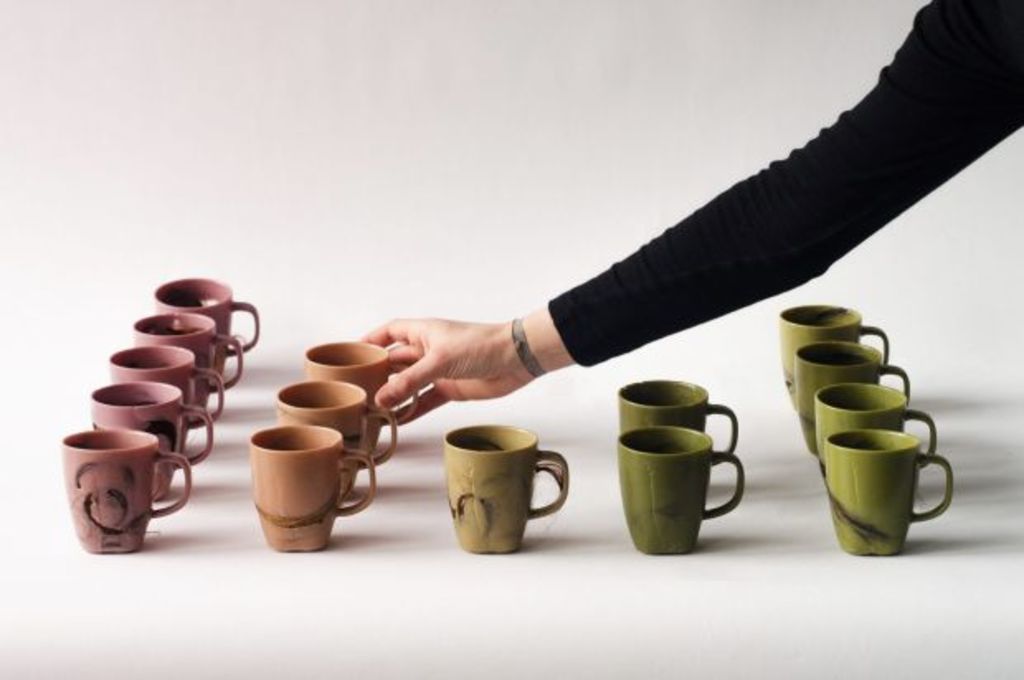Repulsive and confronting: Is human hair the new it-product?

As the world’s population surges, human hair is one of the few natural resources that increase with it. As a plentiful and renewable substitute to waning resources like tortoise shell, horn and tropical woods, an increasing number of designers are exploring its possibilities as a sustainable alternative and viable material for everyday objects.
“It has huge potential,” agrees emerging Hungarian artist Krisztina Czika, whose collection of IKEA-inspired cups crafted from wax and human hair recently made international headlines. “It is biodegradable, durable, and constantly renews itself at a remarkable rate.”
While mass production of household items is based on resilience and high quantities, Czika says products made using a natural resource like human hair focus on quality, sufficiency and, most crucially, consumer acceptance. “It is up to the maker and the buyer to appreciate it as an acceptable day-to-day material. That is the real challenge.”
Whilst human hair has historically played a significant role in many cultures, Amsterdam-based designer Zsofia Kollar says western society still views it largely as a beauty trend. “It is only admired when it is on someone’s head,” she says. “I like to play with materials, like hair, that people find repulsive or confronting. Hopefully by promoting its unknown qualities and potential, I can provide a new appreciation and perspective on it.”
Although human hair is everywhere, it is surprisingly not always easy to source. “We started working with hair acquired from hair shops in east London that supplied it for extensions and wigs,” says Azusa Murakami, who shares London-based Swine Studios with fellow collaborator Alexander Groves. “They were all made in China, so we traced the supply chain back to the people growing the hair and the factories processing it.”

This is not a VÄRDERA cup by Krisztina Czika. Photo: Margherita Sold
It was while in Shanghai, a port city that sees large quantities of human hair pass through, that Murakami says inspiration struck. “We see design objects as a tool for saying more about the world, and we like to design with a sense of place.” Creating a collection of exquisite home objects inspired by 1930s Shanghai Deco, Murakami and Groves combined hair with natural bio resin to create a new composite that featured a striking aesthetic and surprising wood-like durability. “Hair, particularly Asian, grows incredibly quickly, up to 16 times faster than hardwood mahogany,” says Murakami. “It’s also very strong – a full head of hair can take the weight of two African elephants.”
Yet despite its strong attributes, dehumanising human hair and encouraging its recognition as a viable natural resource is perhaps the most challenging aspect of using it. “Hair can be very desirable when associated with beauty,” says Groves, “but when it is used out of context it can be considered repulsive, so the challenge is always to create something that can be attractive and honest.”

Blonde human hair weave by Zsofia Kollar.
Beauty and acceptance were the inspiration behind Kollar’s exquisite hand woven hair tapestry. “Blonde hair reflects light well, and I discovered that its reflection changed depending on the direction of the weaves,” she explains. “In the past, human hair waste has been used to clean oil spills from the ocean, so I used the weave’s hair oils in the same way, infusing them with fragrance. Hopefully it will contribute to the way people view hair as an acceptable everyday material.”
Luckily, given its resourcefulness, products created from human hair are not always easy to identify. “Many people who love my hair weave, don’t realise at first that it is made from human hair,” says Kollar. “They simply fall in love with it, and then question what it is. By then it doesn’t matter, because they are already in love. Proving perhaps, that given the opportunity and an open mind, human hair can have a beautiful second life.”
We recommend
We thought you might like
States
Capital Cities
Capital Cities - Rentals
Popular Areas
Allhomes
More










